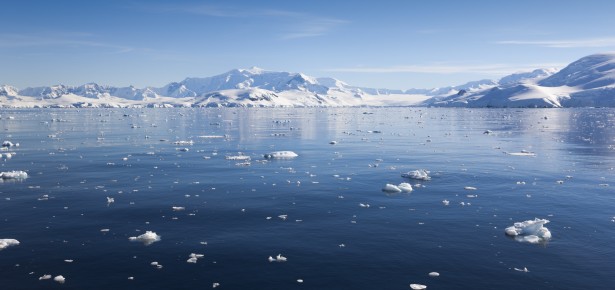
The Polar Regions have been, and are likely to continue to be, one of the main regions seeing major environmental change as a result of greenhouse warming. The main reason for this is an ice-albedo feedback – the more ice melts, the darker the exposed surface becomes, allowing more solar radiation to be absorbed, thus warming the surface more and continuing the process. Thus, the main climate change in the Polar Regions is through warming of both the atmosphere and the ocean. Nevertheless, due to the very different geography of the Arctic and Antarctic, they are responding to global change in very different ways. In the Arctic, sea-ice cover is reducing increasingly rapidly, particularly in summer, leading to warmer, and more productive, oceans. Arctic ice sheets and glaciers are reducing, with more freshwater entering the ocean, raising sea level. The surrounding continents are also mostly warming, leading to increases in river flows from more rainfall, and decreases in permafrost cover. In the Antarctic, in contrast, the atmospheric warming has been more geographically restricted, to the Antarctic Peninsula, although ocean warming is having an impact on enhancing under-ice melting of the ice shelves in west Antarctica. Indeed, while sea-ice in the Antarctic is highly variable from year to year, there has been a slight increasing trend in recent years. This may be a feedback from warming leading to more freshwater input to the ocean, making the ocean freeze more easily.
The most direct changes to global climate and ocean currents are likely to be from change in the Arctic, at least for the next few decades. The warming Arctic seas may already be enhancing heat fluxes to the atmosphere so as to produce more weather variability and extremes, and at times colder continents as a result of changes to atmospheric air flow. In contrast, the increasing flux of meltwater to the ocean may be decreasing the deep convection in the ocean, slowly decreasing the strength of the global meridional overturning circulation. If so, this would lead to a decrease in the movement of warm water poleward in the North Atlantic Drift. The world is beginning a major environmental experiment with greenhouse gas emissions, and the current climate models are not unanimous in their predictions of the details of future perturbations of climate.
Read more on this topic:
from Professor David Walton in part 1 of the series
and from Professor Roger Barry in part 2 of the series
Latest Comments
Have your say!